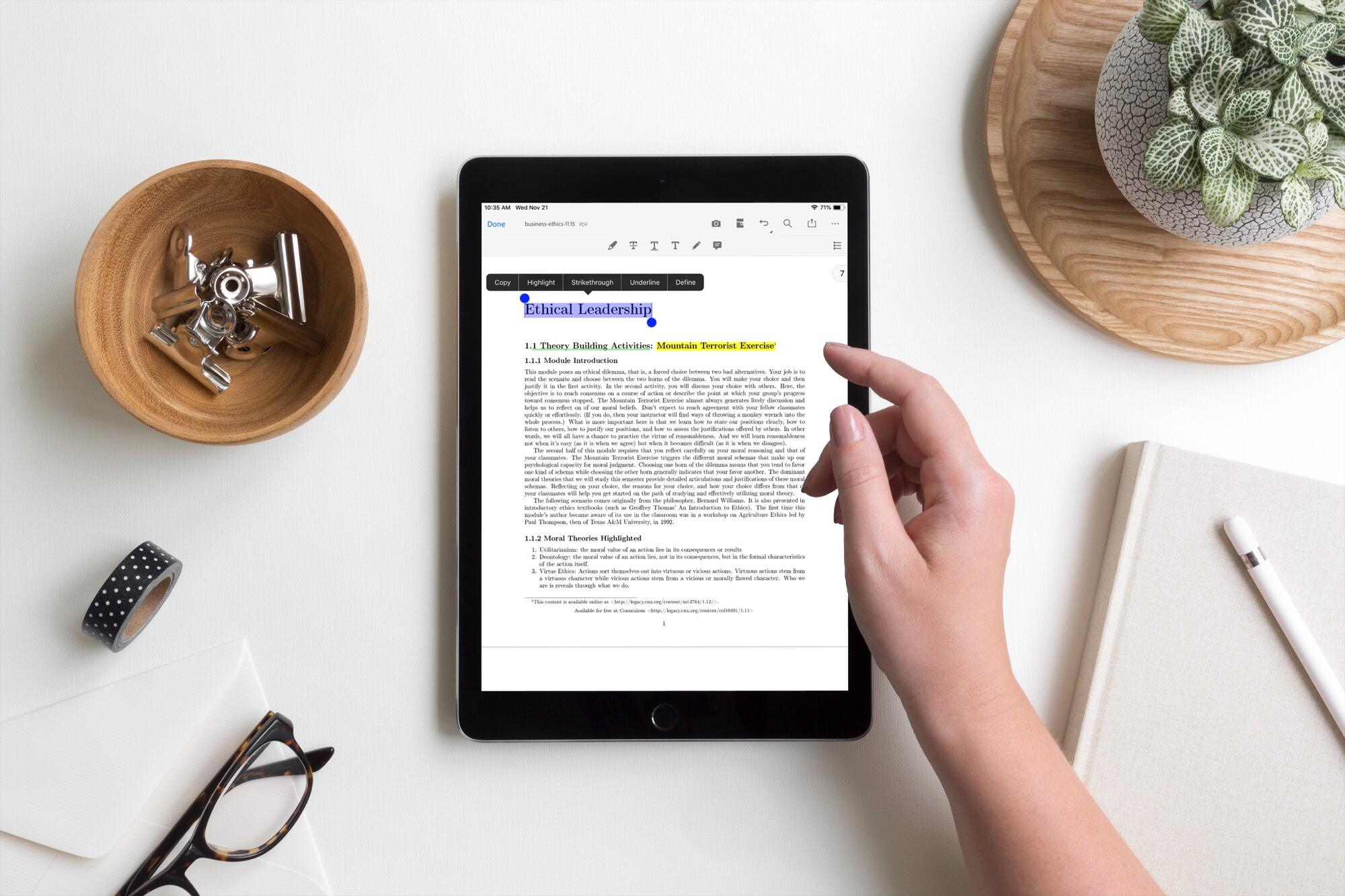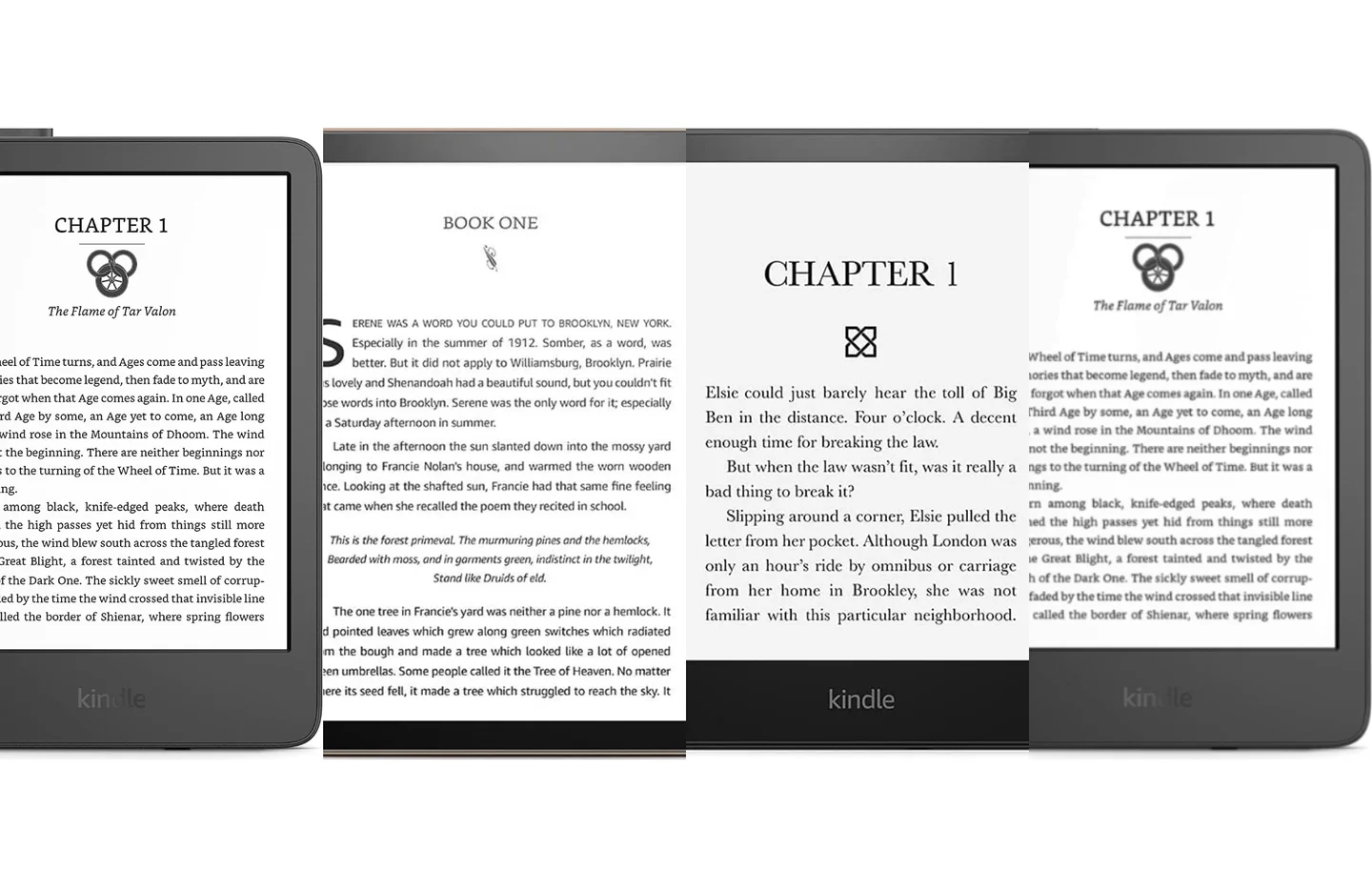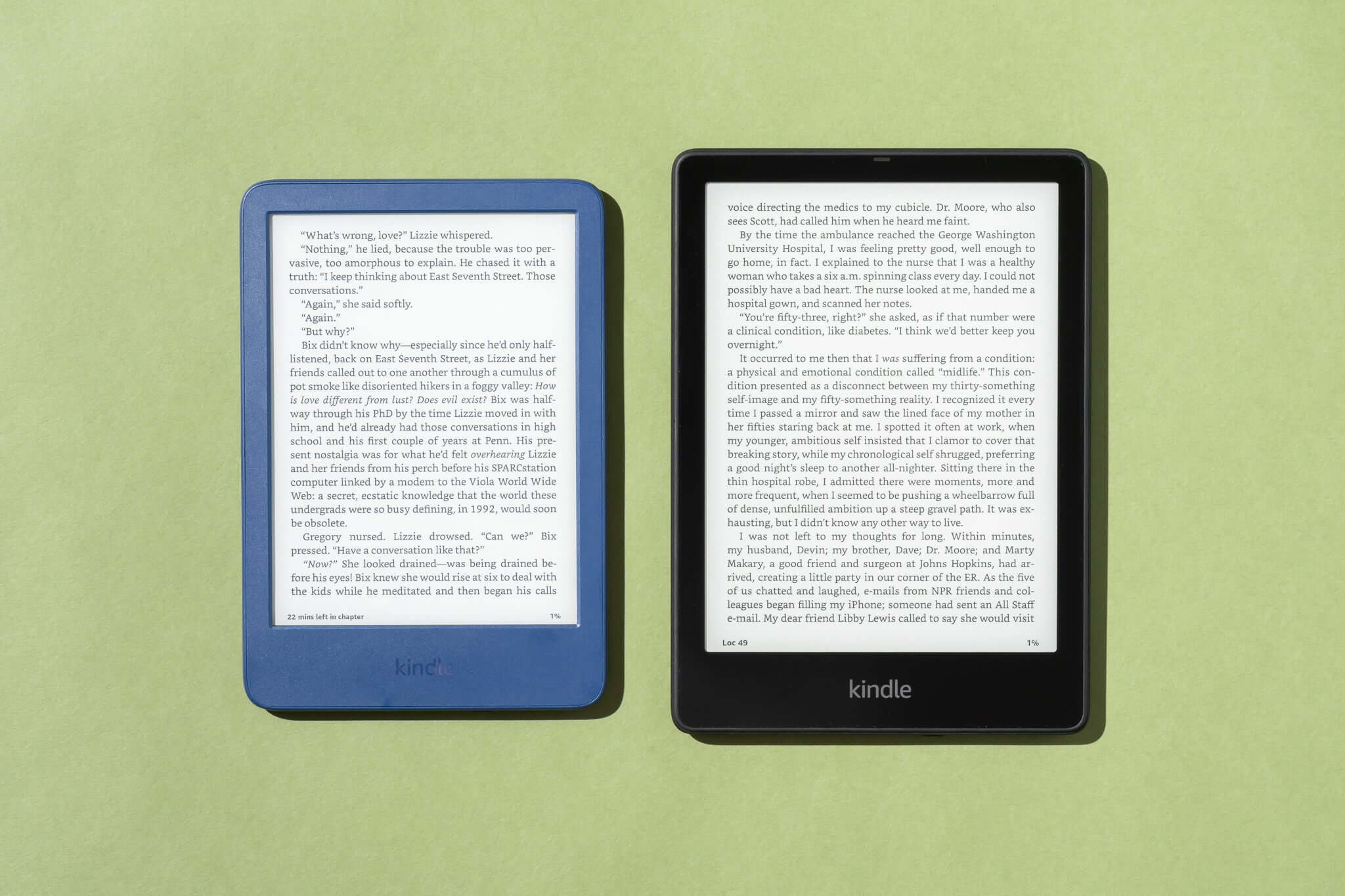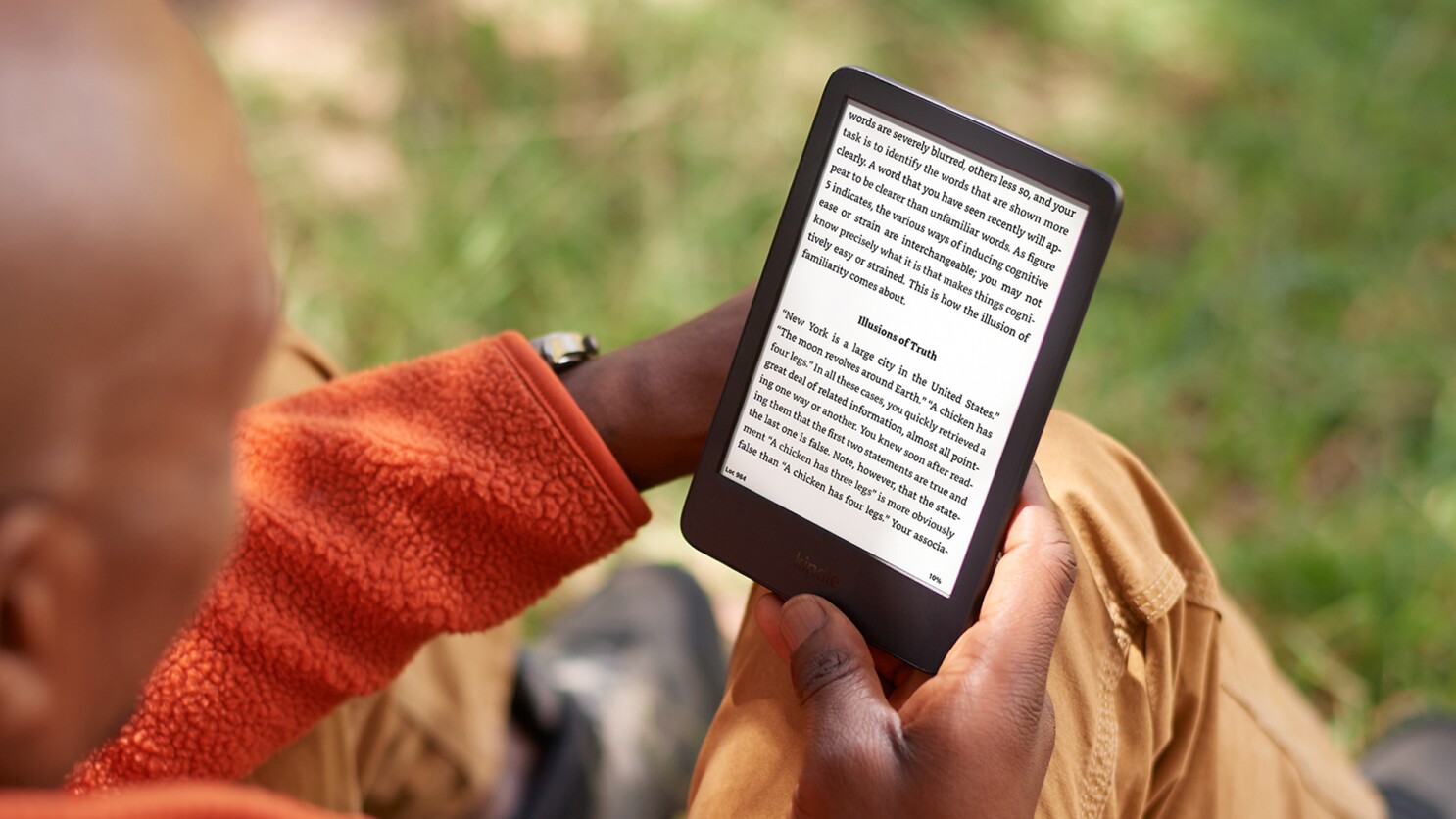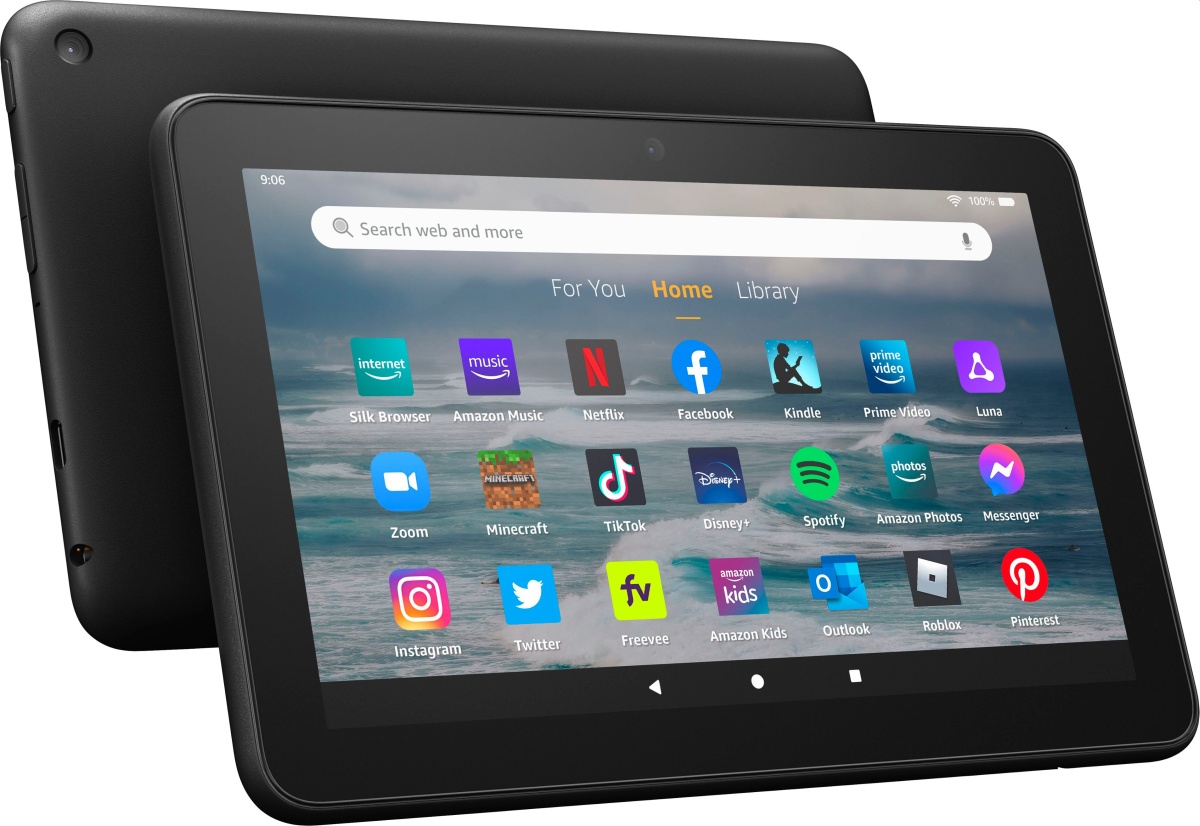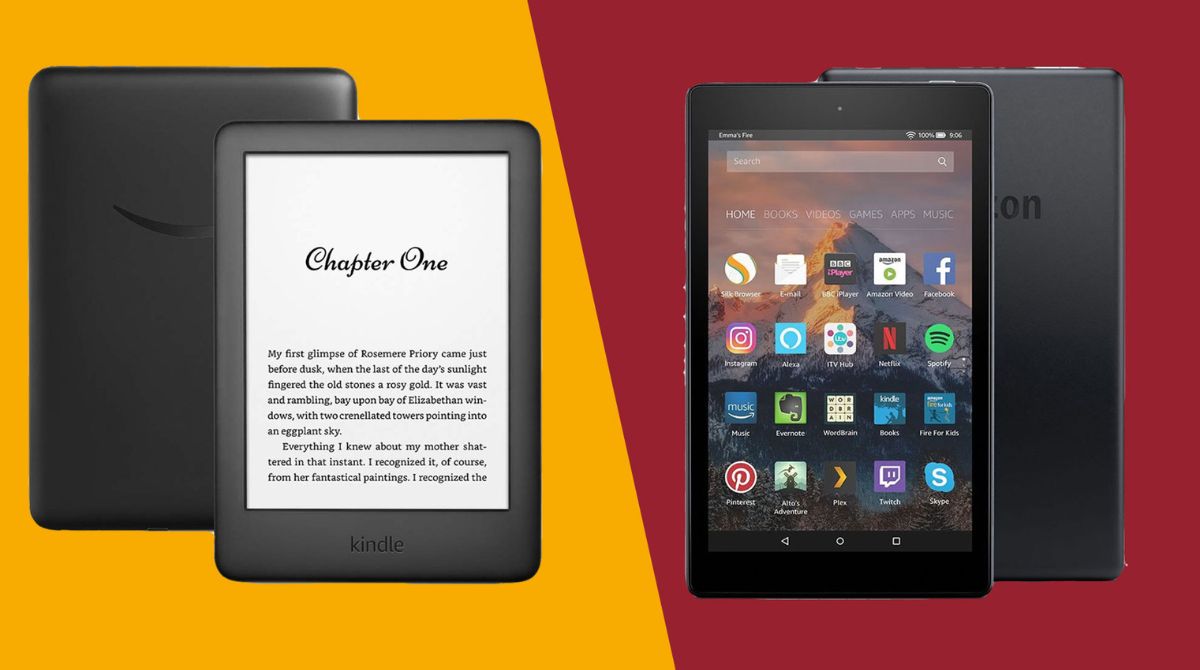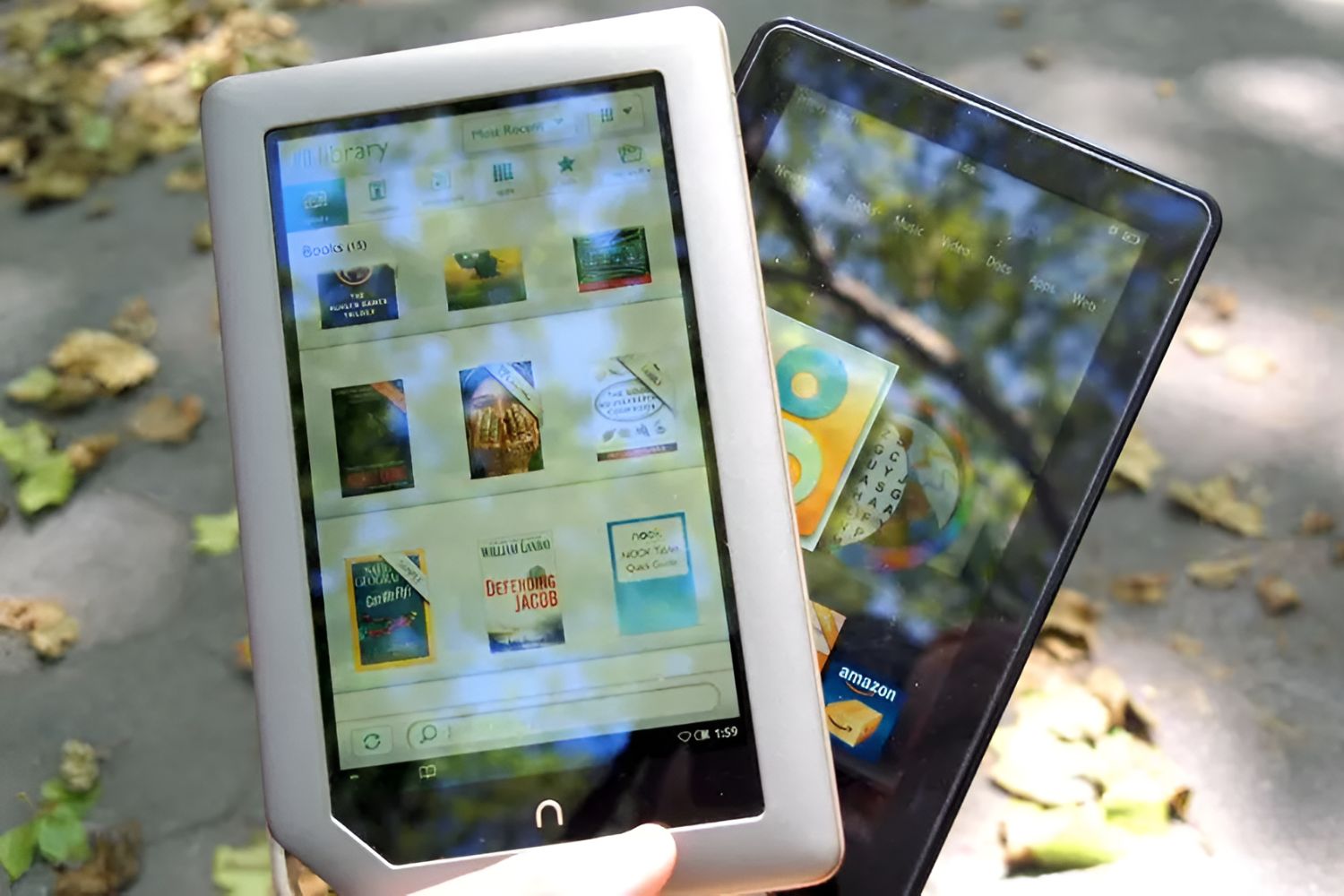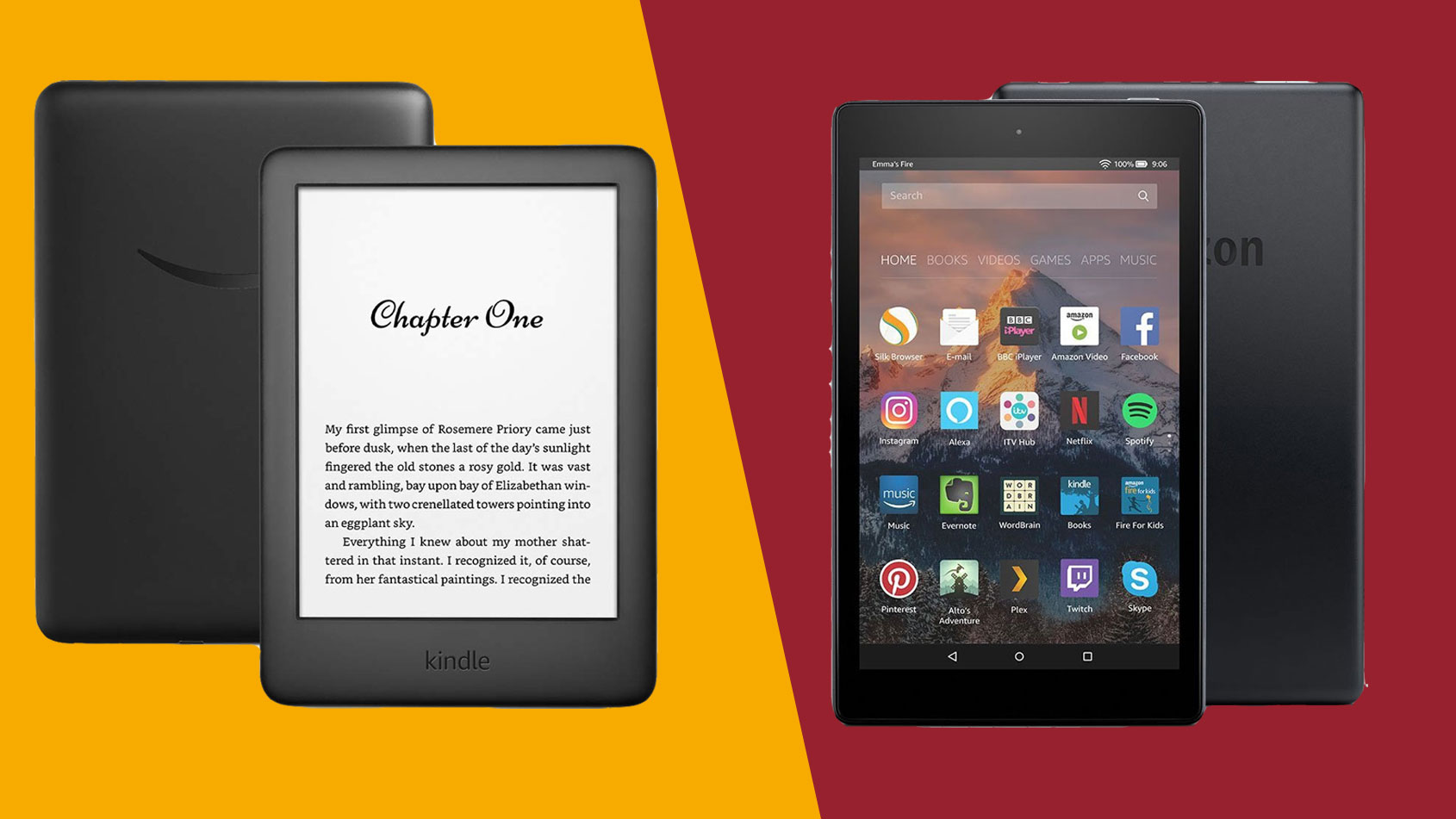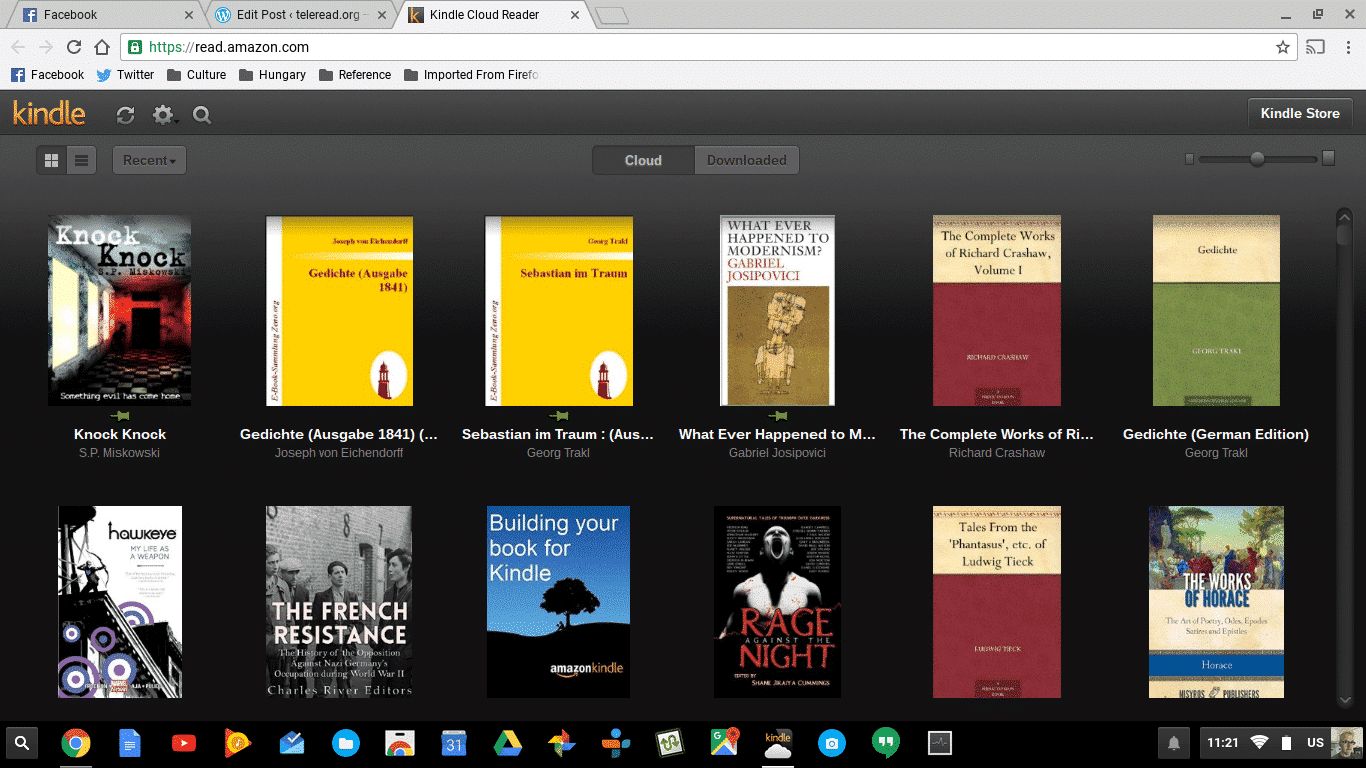Introduction
The world of reading has evolved with the advent of technology, and the traditional printed books are now being replaced by digital versions. One of the most popular devices for reading digital books is a tablet. With a tablet, you can access and read a vast collection of books, magazines, newspapers, and other written content all in one portable device.
However, with so many tablets available in the market, it can be overwhelming to choose the best one for reading books. In this article, we will explore the key factors to consider when selecting a tablet specifically for reading purposes.
When searching for the ideal tablet for reading books, it’s important to consider various aspects such as the display and size, screen technology, battery life, storage capacity, operating system, available apps and eBook stores, price range, user-friendly features, durability, and build quality. By understanding these factors, you can make an informed decision and choose a tablet that will enhance your reading experience.
Whether you are an avid reader or someone who enjoys occasional reading, having the right tablet can significantly improve your reading experience. So, let’s dive into the details and discover the best tablet for reading books.
Display and Size
When it comes to reading books on a tablet, the display and size play a crucial role in providing an immersive reading experience. The screen size should be large enough to comfortably display text and graphics, while being portable enough to carry around with ease.
Tablets typically come in various sizes, ranging from 7 to 13 inches or more. Larger tablets, such as the iPad Pro or Samsung Galaxy Tab S7, offer a more spacious screen that allows you to view content more comfortably. On the other hand, smaller tablets like the iPad Mini or Amazon Fire HD 8 are more compact and easier to hold with one hand for extended periods of reading.
In addition to the size, the display quality is equally important. Look for tablets with high-resolution screens that offer clear and sharp text. Most tablets utilize either LCD or E-ink screen technology. LCD screens are vibrant and offer a wide range of colors, making them suitable for reading magazines and comics. On the other hand, E-ink screens mimic the appearance of ink on paper and are easier on the eyes for extended reading sessions.
Considering your reading preferences, assess whether you prioritize a larger screen for better visibility or a more compact tablet for ease of handling. Remember that a tablet’s display and size are vital in ensuring a comfortable reading experience.
E-ink vs. LCD Screens
One of the significant considerations when selecting a tablet for reading books is the type of screen technology it utilizes. The two primary options available are E-ink and LCD screens, each with its own advantages and drawbacks.
E-ink screens, also known as electronic paper displays, are designed to replicate the experience of reading ink on paper. These screens use a reflective display technology that does not emit light, resulting in reduced eye strain during long reading sessions. E-ink displays have excellent visibility even in direct sunlight, making them ideal for outdoor reading. Furthermore, E-ink screens consume minimal power, resulting in extended battery life compared to LCD screens.
In contrast, LCD screens offer vibrant colors and sharper graphics, making them suitable for displaying images, videos, and interactive content. LCD screens often have a backlight, which provides a bright display in low-light conditions. However, prolonged reading on LCD screens can cause eye fatigue due to the emitted light and the higher contrast levels.
The choice between E-ink and LCD screens ultimately depends on your reading habits and preferences. If you are primarily focused on reading books and desire a more paper-like reading experience, an E-ink screen may be the better option. On the other hand, if you enjoy reading magazines, graphic novels, or other media-rich content, an LCD screen might provide a more immersive experience.
It’s worth noting that some tablets offer a hybrid approach, combining both E-ink and LCD screens in a single device. These hybrid tablets provide the benefits of both display technologies, allowing you to switch between E-ink mode for reading books and LCD mode for multimedia consumption.
Consider your reading habits, the type of content you plan to consume, and the level of eye comfort you desire when deciding between E-ink and LCD screens for your reading tablet.
Battery Life
One of the key factors to consider when selecting a tablet for reading books is battery life. Since reading books can be a time-consuming activity, you’ll want a tablet that can last for extended periods without needing a recharge.
Battery life varies widely among different tablets, primarily due to factors such as screen size, display technology, and overall power efficiency. Tablets with E-ink screens tend to have significantly longer battery life compared to those with LCD screens. E-ink screens consume very little power since they only utilize energy when the page is refreshed. This allows E-ink tablets to last for weeks or even months on a single charge, depending on usage.
On the other hand, tablets with LCD screens may require daily or near-daily charging, especially if used for extended reading sessions or multimedia consumption. While advancements in technology have improved the power efficiency of LCD screens, they still use more power compared to E-ink screens.
When comparing tablets, take note of the manufacturer’s claimed battery life and read reviews from users to get a realistic idea of how long the tablet lasts in real-world usage. Additionally, consider how you plan to use the tablet. If you intend to use it mainly for reading and want long intervals between charges, prioritize tablets with extended battery life.
It’s important to remember that battery life can vary based on factors such as screen brightness, Wi-Fi usage, and running background apps. Adjusting settings, such as reducing screen brightness, disabling unnecessary notifications, and closing unused apps, can help prolong battery life.
Ultimately, the ideal tablet for reading books balances battery life with other features that are important to you, such as display quality and size. Consider your reading habits and the amount of time you expect to spend reading on the tablet to make an informed decision.
Storage Capacity
When choosing a tablet for reading books, storage capacity is an important consideration. The amount of storage your tablet has determines how many books, magazines, and documents you can store directly on the device.
Tablets generally offer varying storage options, typically in capacities of 16GB, 32GB, 64GB, or higher. It’s essential to assess your storage needs based on the number of books and other media you plan to keep on the tablet. Consider whether you prefer to download books for offline reading or rely on cloud storage and streaming services for accessing your content.
If you’re an avid reader with a vast collection of eBooks, magazines, or comics, you may want to opt for a tablet with higher storage capacity or one that offers expandable storage via a microSD card slot. This allows you to store a significant number of books directly on the device without relying solely on an internet connection. Additionally, if you plan to use the tablet for other purposes like multimedia consumption or gaming, a larger storage capacity will be beneficial for storing those files as well.
Alternatively, if you primarily read books online or prefer streaming services, a tablet with a smaller storage capacity may suffice. Many tablets provide cloud storage options, allowing you to store your content remotely and access it when needed. This can help free up valuable onboard storage space.
Remember to consider future needs as well. If you anticipate your digital library to grow over time or plan to use the tablet for multiple purposes, it may be wise to invest in a tablet with higher storage capacity or expandable storage options.
Storage capacity is a crucial factor for ensuring you have adequate space for your digital library. Assess your storage needs based on your reading preferences and habits to choose a tablet that can accommodate your collection without compromising performance.
Operating System
The operating system (OS) of a tablet plays a significant role in its functionality and user experience. When selecting a tablet for reading books, consider the available operating systems and their features to ensure compatibility with your reading preferences and requirements.
The three most common operating systems for tablets are Android, iOS, and Windows. Each has its strengths and weaknesses, so it’s vital to assess which one best suits your needs.
Android, developed by Google, is an open-source operating system that offers a wide range of tablets at various price points. Android devices provide flexibility in terms of customization and access to the Google Play Store, which is home to a vast selection of eBook apps and other reading-related applications. Additionally, Android tablets often offer expandable storage options and compatibility with different file formats, giving users more freedom to manage their digital libraries.
iOS, the operating system exclusive to Apple devices, provides a seamless and user-friendly experience. iPads, with their intuitive interface and optimized performance, are popular choices for reading books. Apple’s App Store offers a plethora of reading apps, and the iBooks app provides a seamless integration with the Apple ecosystem. However, it’s important to note that iOS devices can be more expensive than their Android counterparts.
Windows tablets, running on the Windows operating system, offer a familiar and versatile interface for users who are already accustomed to Windows computers. Windows tablets like the Microsoft Surface provide the convenience of running desktop applications and offer a full-featured experience, making them suitable for productivity tasks in addition to reading. However, the selection of reading-specific apps may be more limited compared to Android or iOS.
Consider your familiarity with operating systems, app availability, and your existing ecosystem (if any) when choosing the operating system for your reading tablet. Assess which OS will provide the best reading experience and meet your overall needs and preferences.
Operating systems are a fundamental aspect of any reading tablet, and selecting the right one will ensure a smooth and enjoyable reading experience.
Available Apps and eBook Stores
The availability of apps and eBook stores is a crucial factor to consider when choosing a tablet for reading books. With a wide range of reading apps and access to a diverse collection of eBooks, you’ll have a better reading experience and a larger selection of content to explore.
Both the Google Play Store (for Android) and the App Store (for iOS) offer numerous reading apps, including popular options like Kindle, Nook, Kobo, and Google Play Books. These apps allow you to access a vast library of eBooks and customize your reading experience with features such as adjustable font sizes, night mode, bookmarks, and search functionalities.
Furthermore, many tablets come pre-installed with a default reading app that ties into the manufacturer’s eBook store. For example, Amazon Kindle tablets provide seamless integration with the Kindle Store, offering a vast selection of eBooks, magazines, and newspapers. Similarly, Apple’s iBooks app connects to the Apple Books store, and Barnes & Noble’s Nook tablets offer access to the Nook Store.
Consider your preferred reading ecosystem and the availability of eBooks in the respective stores when choosing a tablet. If you already have a large collection of eBooks from a specific store, ensure that the tablet you choose supports that store’s reading app. Additionally, check if the tablet allows for easy sideloading of eBooks from other sources or supports file formats compatible with your existing eBook library.
Aside from reading apps, explore other relevant apps that enhance the reading experience. For example, apps like Goodreads allow you to discover new books, track your reading progress, and join book communities. News aggregator apps can keep you up to date with current events and provide access to digital magazines and newspapers.
Before making a decision, research the availability and compatibility of reading apps and eBook stores on different tablets. Ensure that the tablet you choose offers a wide range of apps and access to an extensive eBook collection that aligns with your reading preferences.
Price Range
Price is an important consideration when selecting a tablet for reading books. Tablets come in a wide range of price points, and it’s essential to find a device that fits your budget while meeting your reading needs.
Lower-priced tablets, such as Amazon Fire tablets or budget-friendly Android options, offer a cost-effective solution for those on a tight budget. These tablets provide basic functionality for reading eBooks and accessing popular reading apps at an affordable price. However, they may have limitations in terms of display quality, processing power, available storage, and overall build quality.
Mid-range tablets, like the iPad mini or Samsung Galaxy Tab S6 Lite, offer a balance between price and performance. These tablets often provide better displays, improved processing power, and a wider range of features compared to budget options. They may also offer additional features like expandable storage or support for popular reading apps.
High-end tablets, such as the iPad Pro or Samsung Galaxy Tab S7, come with advanced features and premium build quality. These tablets often offer larger and higher-resolution displays, faster processors, ample storage space, and other specialized features for an enhanced reading experience. However, they can carry a substantial price premium.
Consider your budget and the features that are most important to you when deciding on a price range for your reading tablet. Assess how much you are willing to invest in a device that meets your reading needs without compromising on performance or key features.
It’s worth remembering that price isn’t the sole determinant of a tablet’s quality. Reading tablets at different price points can offer varying levels of performance and features. Read reviews, compare specifications, and consider your personal preferences to find the best value-for-money tablet that suits your budget.
By analyzing your requirements and exploring the available options within your price range, you can find a tablet that strikes a balance between affordability and performance for an enjoyable reading experience.
User-friendly Features for Reading
When it comes to reading books on a tablet, user-friendly features can significantly enhance the reading experience. Consider the following features when selecting a tablet that offers seamless navigation, customization options, and accessibility for an enjoyable reading experience.
1. Adjustable backlight and screen brightness: Look for a tablet that allows you to adjust the backlight or screen brightness to find a comfortable level for reading in different lighting conditions. This feature can help reduce eye strain and improve visibility.
2. Adjustable font size and style: Opt for a tablet that offers the ability to customize the font size and style. This allows you to adjust the text to your preferred reading comfort, ensuring that the text is neither too small nor too large.
3. Night mode: Night mode, or a blue light filter, reduces the amount of blue light emitted by the screen. This feature can be particularly useful for reading in low-light settings and helps promote better sleep patterns.
4. Page-turning options: Consider whether the tablet offers multiple ways to turn pages, such as tapping, swiping, or using physical buttons. The ability to choose your preferred method of page-turning can contribute to a more personalized reading experience.
5. Annotation and highlighting: If you enjoy taking notes or highlighting passages while reading, look for a tablet that supports annotation features. This lets you mark important sections or jot down thoughts directly on the screen.
6. Syncing capabilities: Tablets with syncing capabilities ensure that you can seamlessly switch between devices and continue reading with your progress and bookmarks intact. This feature is especially useful if you also read on other devices, such as a smartphone or eReader.
7. Dictionary and translation tools: Some tablets offer built-in dictionary and translation tools, allowing you to quickly look up unfamiliar words or translate text without leaving the reading app.
8. Accessibility features: Consider accessibility features such as text-to-speech functionality for those who prefer to listen to books instead of reading, adjustable color contrast for enhanced visibility, and compatibility with screen readers for visually impaired users.
Assess your personal preferences and reading habits to determine which user-friendly features are essential for your tablet. Prioritizing these features will ensure a smooth and tailored reading experience that caters to your needs.
Durability and Build Quality
When choosing a tablet for reading books, considering the durability and build quality is essential, as it ensures the longevity of the device and withstands regular use. A well-built tablet can provide a reliable reading experience for years to come.
Look for tablets made with high-quality materials that can withstand daily wear and tear. Devices with sturdy metal or durable plastic frames are generally more resilient than those made with cheaper materials. Tablets with reinforced corners and scratch-resistant screens offer added protection against accidental drops and scratches.
Additionally, consider tablets that have undergone durability testing or have received certifications such as MIL-STD-810G, which indicates that the device meets specific military-grade standards for durability.
Water and dust resistance is another factor to consider, especially if you plan to use the tablet in outdoor or travel settings. Having an IP rating (Ingress Protection rating) signifies that the tablet is resistant to water and dust to a certain degree. A higher IP rating indicates better protection against these elements.
Evaluate user reviews and expert opinions regarding the build quality and durability of different tablets. This information can give you insights into the overall reliability and longevity of the device.
Consider the warranty and after-sales support offered by the manufacturer as well. A tablet with a longer warranty period and accessible customer support can provide peace of mind and assurance in case of any issues that may arise.
Remember that a reliable and robust tablet will ensure uninterrupted reading sessions and a device that stands the test of time. Assess the build quality, durability features, and warranty options when making your decision.
Conclusion
Choosing the best tablet for reading books involves considering several important factors. From display and size to operating system, storage capacity, user-friendly features, and durability, each aspect contributes to the overall reading experience.
When selecting a tablet, ensure that the display is large enough for comfortable reading and that the screen technology suits your preferences, whether it be E-ink or LCD. Battery life is crucial for uninterrupted reading sessions, so look for a tablet with a long-lasting battery or consider E-ink screens for extended usage on a single charge.
Storage capacity is essential for storing a diverse collection of books, so assess your needs and choose a tablet with sufficient onboard storage or the option for expandable storage. Consider the operating system that offers a seamless user experience and compatibility with your preferred reading apps and eBook stores.
User-friendly features, such as adjustable backlight and font settings, night mode, and annotation tools, can greatly enhance your reading experience. Additionally, prioritize durability and build quality to ensure the longevity of your tablet, especially if you plan to carry it around, and consider factors like water and dust resistance.
Finally, take into account the price range that suits your budget while meeting your reading requirements. Remember that while high-end tablets offer advanced features, there are also affordable options that provide a satisfactory reading experience.
By carefully considering these factors and prioritizing your specific reading needs, you can find the best tablet that suits your preferences and enhances your reading journey. Happy reading!







